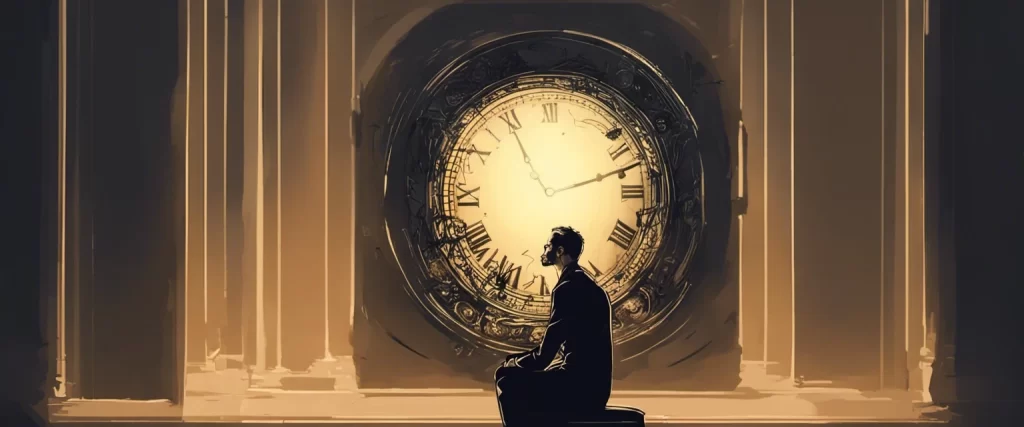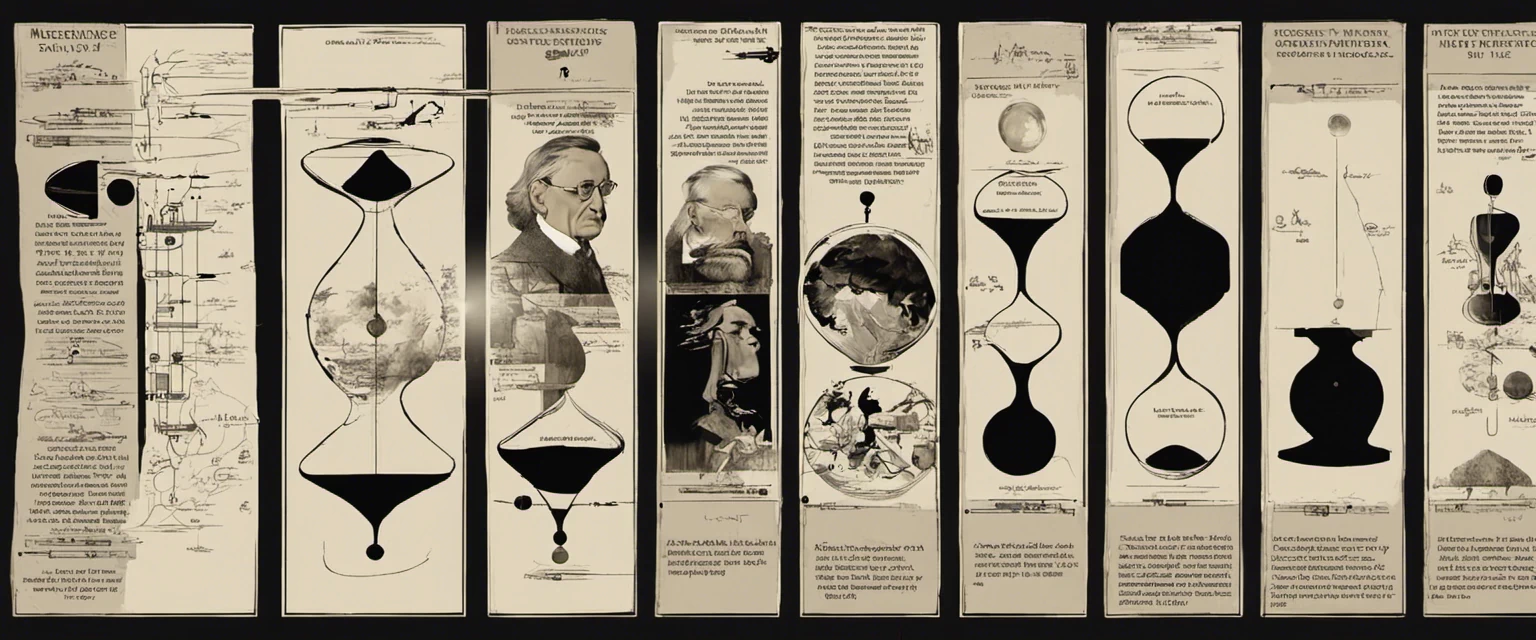—A Brief History of Time & Cosmos
Humanity’s curiosity regarding the mysteries of the universe has been a driving force behind the exploration of our existence. Among the countless philosophical and scientific endeavors to understand the cosmos, two books have emerged as extraordinary contributions in the realm of popular science literature— “A Brief History of Time” by Stephen Hawking and “Cosmos” by Carl Sagan. Both these works have captivated readers from all walks of life by unraveling the enigmatic complexities of space, time, and the origins of the universe.
As we embark on this comparative study, we aim to delve into the remarkable similarities and distinct approaches employed by Hawking and Sagan as they introduce complex scientific concepts to a wider audience. By examining the shared themes, distinctive ideologies, and persuasive narratives woven within these books, we hope to uncover their unique strengths in enlightening readers about the grandeur and intricacies of the cosmos.
At a glance, “A Brief History of Time” and “Cosmos” appear to share a common goal – to peel back the layers of the unknown, revealing a universe awe-inspiring in its vastness and complexity. Stephen Hawking, a theoretical physicist, and cosmologist, invites readers into the realm of theoretical physics, exploring concepts such as black holes, the Big Bang, and the nature of time itself. On the other hand, Carl Sagan, renowned astronomer, and science communicator, directs his focus towards the broader scope of cosmic evolution, presenting humanity’s role within the vast cosmic tapestry.
While differing in their areas of expertise, it is fascinating to observe how both Hawking and Sagan successfully blend scientific rigor with philosophical musings, providing readers with a profound and introspective experience. Hawking, with his authoritative scientific voice, illuminates the underlying theories and principles that govern the cosmos, often raising philosophical questions about the limits of human understanding and the nature of reality. Conversely, Sagan takes a more holistic approach, intertwining science, history, and philosophy to elucidate humankind’s place in the universe, emphasizing the impact of science on nurturing our sense of wonder and inspiring a cosmic perspective.
One of the greatest challenges in science communication lies in bridging the gap between technical intricacies and engaging narratives accessible to non-experts. Remarkably, both Hawking and Sagan succeed in this endeavor, employing different pedagogical strategies to convey their knowledge effectively. While Hawking employs a concise and precise approach, distilling complex ideas into bite-sized explanations, Sagan adopts a lyrical and poetic prose style, enchanting readers with his captivating storytelling abilities. Through our comparative analysis, we aim to evaluate the effectiveness of these diverse communication strategies and the impact they have on the comprehension and engagement of the readership.
By undertaking a comprehensive comparative study of “A Brief History of Time” by Stephen Hawking and “Cosmos” by Carl Sagan, we embark on a voyage across the cosmos, delving into the depths of scientific knowledge intertwined with philosophical contemplation. As we navigate these two literary masterpieces, we will uncover the shared wisdom, captivating narratives, and distinct approaches employed by Hawking and Sagan. Ultimately, this study will shed light on the lasting legacies left by these visionary scientists, as they embarked on the noble journey to demystify the wonders and intricacies of the universe for the curious minds of every generation.
Brief Summary of Two Books
A Brief History of Time by Stephen Hawking
“A Brief History of Time” by Stephen Hawking is a popular science book that explores various complex ideas in cosmology, astrophysics, and the nature of time. In the book, Hawking discusses the Big Bang theory, black holes, the origins and possible fates of the universe, as well as the concept of time itself. Hawking presents these scientific concepts in a reader-friendly manner, offering insights into the fundamental questions about the universe’s origins and existence. The book aims to make advanced scientific concepts accessible to the general public, encouraging readers to contemplate the mysteries of the cosmos.
Cosmos by Carl Sagan
“Cosmos” by Carl Sagan is a scientific exploration of the universe. Sagan takes readers on a captivating journey through space and time, exploring topics such as the origins of life, the formation of galaxies, the search for extraterrestrial intelligence, and the mysteries of black holes. Through a blend of astronomy, biology, and physics, he delves into the vastness of the cosmos, illustrating the interconnectedness of everything in the universe. Sagan’s passionate and thought-provoking prose not only educates readers about the wonders of the cosmos but also emphasizes the necessity of scientific inquiry and the importance of preserving the Earth for future generations. His books include The Demon-Haunted World.
Comparison between Two Books

Similarities in space and time
“Parallel Universes: A Brief History of Time and Cosmos”
In the widely acclaimed books, “A Brief History of Time” by Stephen Hawking and “Cosmos” by Carl Sagan, both renowned scientists delve into the intriguing realms of space and time, shedding light on the mysteries that surround them. Despite being distinct in their approaches and perspectives, these seminal works share several striking similarities in their conceptualization of space and time.
1. Profound Curiosity: Both Hawking and Sagan passionately explore the depths of space and time, driven by an insatiable curiosity about the universe’s fundamental workings. Through their writings, they invite readers on a journey to comprehend the great unknowns, aiming to unravel the secrets that lie beyond our immediate perception.
2. Expansion of the Universe: Both authors touch upon the concept of the expanding universe—a foundational idea in modern cosmology. Hawking deftly explains the big bang model, describing how the universe originated from an infinitely small, dense point and has been expanding ever since. Similarly, Sagan elucidates this notion, emphasizing the evidence garnered from observing distant galaxies and their movement away from us.
3. Black Holes: Hawking and Sagan delve into the enigmatic phenomena of black holes, shedding light on their nature and intense gravitational pull. Hawking explores the concept of event horizons, clearly illustrating the mechanism by which black holes appear to trap everything within their vicinity. Sagan, meanwhile, discusses the potential existence of black holes as remnants of enormous stars, detailing their formation and their role in shaping the overall structure of the universe.
4. Time as a Dimension: Both books recognize time as an essential dimension that intertwines with space. Hawking delves into the concept of curved spacetime, explaining how massive objects distort this fabric of the universe, leading to phenomena such as gravity. Similarly, Sagan elucidates the inseparable relationship between space and time, emphasizing the need for a unified perspective when exploring the cosmos.
5. Cosmic Perspective: Both authors emphasize the significance of adopting a broader, cosmic perspective. Despite their scientific rigor, Hawking and Sagan comprehend the profound nature of our existence within the fabric of the universe. They encourage readers to contemplate the vastness of the cosmos and the minuscule role humanity plays in comparison. This shared perspective invites introspection and awe at the grandeur of the universe.
While Hawking’s “A Brief History of Time” and Sagan’s “Cosmos” are separate works, they connect through their efforts to uncover the mysteries of space and time. By addressing the expansion of the universe, the intriguing nature of black holes, the temporal dimension, and the importance of adopting a cosmic perspective, these books parallel each other and contribute to our understanding of the ever-fascinating cosmos.
Divergences in space and time
A Brief History of Time, written by Stephen Hawking, and Cosmos, written by Carl Sagan, are two influential scientific books that explore the mysteries of the universe. While both books touch upon the subjects of space and time, they diverge in their approach, focus, and the level of scientific complexity presented.
In A Brief History of Time, Stephen Hawking delves into theoretical physics and cosmology, aiming to explain complex concepts in a more accessible manner for the general public. Hawking takes the reader on a journey through the origins of the universe, discussing the Big Bang theory, black holes, time travel, and the ultimate fate of the cosmos. However, the book emphasizes more on the physics behind these phenomena, focusing on the scientific equations and theories that underpin our understanding of space and time.
On the other hand, Carl Sagan’s Cosmos takes a more holistic and philosophical approach to understanding the universe. Sagan explores a wide range of scientific topics, including space, time, evolution, and the origin of life. Unlike A Brief History of Time, Cosmos places a greater emphasis on the human experience and the significance of space exploration in our quest for knowledge. Sagan intertwines astronomy and cosmology with human history, culture, and our place in the universe, providing a more comprehensive perspective on space and time.
In terms of complexity, A Brief History of Time can be considered more challenging to comprehend. Hawking delves into advanced concepts such as quantum mechanics, general relativity, and the concept of singularities. The book requires a certain level of familiarity with scientific concepts and mathematical reasoning to fully grasp some of the intricate ideas that Hawking presents.
Contrastingly, Cosmos presents scientific concepts in a more approachable manner, making it accessible to a wider range of readers. Sagan delicately weaves metaphors, analogies, and storytelling techniques to make complex ideas comprehensible, without sacrificing scientific accuracy. This approach allows Sagan to capture the imagination of a broader audience, making Cosmos a popular science classic.
In conclusion, while both A Brief History of Time and Cosmos explore the topics of space and time, they diverge in their approach and level of scientific complexity. A Brief History of Time focuses more on theoretical physics, delving deep into scientific equations and theories, while Cosmos takes a more holistic and philosophical approach, intertwining astronomy with human history and culture. A Brief History of Time demands a higher level of scientific familiarity, whereas Cosmos offers a more accessible read for a wider audience.

Conclusion
Both “A Brief History of Time” by Stephen Hawking and “Cosmos” by Carl Sagan are highly regarded and influential books in the field of science and cosmology.
“A Brief History of Time” delves into various topics in theoretical physics, including the nature of time, black holes, and the Big Bang theory. Hawking presents complex ideas in a relatively accessible manner, making it a popular choice for readers looking to explore the mysteries of the universe.
On the other hand, “Cosmos” takes a broader approach, examining the history of scientific discovery and exploring the interconnectedness of the cosmos. Sagan’s book combines science, philosophy, and history to create a poetic and awe-inspiring journey through space and time.
Both books offer valuable insights into our understanding of the universe, but they approach the subject matter differently. Hawking’s book is more focused on explaining scientific theories concisely, while Sagan’s book emphasizes the beauty and wonder of the cosmos.
Ultimately, the choice between the two depends on your personal preferences and interests. If you are more interested in a comprehensive exploration of physics and cosmology, “A Brief History of Time” might be the better choice. However, if you seek a more poetic and philosophical approach to the subject, “Cosmos” would be highly recommended.



